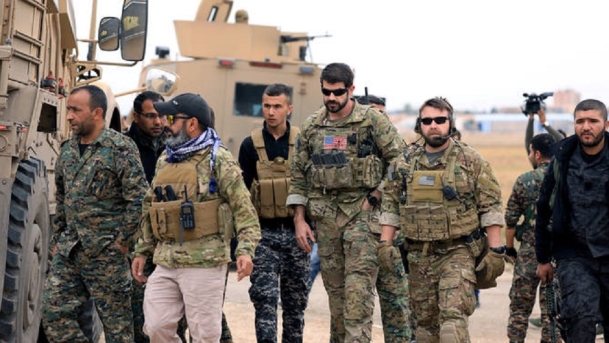
The end of 2018 saw a series of startling developments in the Syrian crisis that will likely alter the balance of power in the country and the wider region. On 12 December 2018, amid reports of Turkish troop deployments on the southern border, Turkish President Recep Tayyip Erdogan announced an impending military offensive against Syrian Kurdish militias east of the Euphrates, which have been allied with US forces since 2015. Following a phone call with US President Donald Trump, Erdogan was reportedly persuaded to postpone the operation.
An even bigger surprise came just a week later, on 20 December 2018, when Trump tweeted that he would withdraw all US troops from Syria within 100 days. Trump reportedly made the decision at Erdogan’s prodding and without consulting any of his own senior defence personnel. While the US president has never hidden his desire to disengage militarily and politically from Syria, the news sent shockwaves throughout Washington, spurring the resignation of Defence Secretary James Matthis.
In contrast, the decision was welcomed in Moscow. Certainly, the withdrawal will boost Russian efforts to restore Damascus’s control over the country and create a political climate suitable for a resolution of the crisis. In the short term, however, the big question is what impact the decision will have for Turkish plans to engage with Kurdish militias east of the Euphrates.
The US maintains some 2,000 troops in eastern and north-eastern Syria, most of them special forces and military advisors. Armed with heavy weapons and intensive air support, they work closely with the Kurdish Democratic Party (KDP) and their militiamen. This cooperation has long been a source of tension in US-Turkish relations, particularly after the KDP carved out an autonomous enclave in northern Syria. Turkey sees the KDP as an arm of the Turkish Kurdistan Workers’ Party (PKK), which it classifies as a terrorist group, and views the Kurdish autonomous region on its southern border as an immediate threat to Turkish national security.
Erdogan therefore cautiously welcomed news of the US withdrawal, but the suddenness and speed of the shift present several challenges and may complicate plans for a military offensive. Turkey’s first concern is whether the withdrawal will be total or whether Trump will ultimately cede to domestic pressure and only reduce troop commitments. It also wants to know if the US will make good on its promise to take back the weapons it has supplied to Kurdish militias when it leaves, and what sort of plans it has in place to prevent chaos in the wake of the withdrawal and maintain security in Arab-majority areas. There is also the question of the fate of the thousands of ISIS elements currently detained by Kurdish militias. A main challenge for Turkey, then, is reaching an agreement with Washington to coordinate an orderly US exit.
The second challenge lies in carrying out its planned offensive against Kurdish forces while avoiding a direct Syrian-Turkish military engagement. The Assad regime and the KDP have maintained semi-cordial relations to serve their mutual interests. Faced with the prospect of a Turkish attack, the KDP could cede areas under its control to the Syrian regime. This would set Turkish forces not only against Kurdish militiamen, but Syrian regime forces as well.
The US exit will have broader implications as well. The decision leaves the Kurdish nationalists of the KDP defenceless and, with their patron gone, will likely cause splits among Arab forces allied with Kurdish militiamen. By the same token, it is certain to bolster the morale of Arab tribes who resent Kurdish control of Arab-majority cities in eastern Syria and maintain good ties with Turkey.
Strategically, the US withdrawal benefits Russia and Iran, the Assad regime’s main supporters. With the US out, Turkey remains the only player in Syria to oppose the regime. This may make negotiations for a resolution of the crisis more difficult, since Assad and his allies will be emboldened to demand the exit of all Turkish forces from Syria. In fact, the regime’s first step may be to attempt to oust armed rebels from Idlib, regardless of the Turkish surveillance outposts in the province.
Regionally, the withdrawal sends a message to America’s Arab allies in the Gulf, who have set great store by the US administration’s willingness to confront Iran—with US troops in Syria constituting a major lynchpin of the strategy. Trump’s decision to leave without advance consultation with Riyadh or Abu Dhabi seriously undermines the Iran-containment strategy. The withdrawal may also impel further troop drawdowns in Afghanistan and Iraq, but even without this, a total withdrawal from Syria gives a strategic boost to Iran and its growing influence in Iraq, Syria, and Lebanon.
**This is a summary of a policy brief originally written in Arabic, available here: http://studies.aljazeera.net/ar/positionestimate/2018/12/181226065925951.html